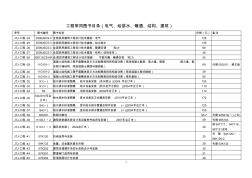Chapter 1 Introduction
1.1 Physical properties
1.2 Chemical properties
1.3 Electrochemistry of aluminum——systems and applications
Chapter 2 Aluminum Production
2.1 Stateoftheart of the HallH6roult process
2.2 Chemistry of molten electrolytes
2.2.1 Fundamental phase diagrams of the electrolyte
2.2.2 The ionic structure and electrode reactions
2.2.3 Physicochemical properties of electrolytes
2.2.4 Electrolytes in industrial cells
2.3 Aluminum electrolysis cells and related technology
2.3.1 General trends
2.3.2 Types of aluminum electrolysis cells
2.3.3 Cell construction
2.3.4 Preheating and startup
2.3.5 Cell technology
2.4 Electromagnetic forces and cell design
2.4.1 General
2.4.2 Busbars arrangement
2.4.3 Metal circulation patterns
2.4.4 Inert electrodes
2.4.5 Future cell design
2.5 Current efficiency
2.5.1 General
2.5.2 The metal re.oxidation reaction
2.5.3 Improvement of current efficiency in industrial cells
2.6 Energy consumption and savings
2.6.1 General
2.6.2 Energy balance
2.6.3 Heat loss distribution in aluminum electrolysis cells
2.6.4 Further improvements
2.7 Penetration of bath into the cathode lining and application
ofbarriers
2.7.1 PenetratiOn of bath
2.7.2 Observations of spent cell linings
2.7.3 Application of diffusion and penetration barriers
2.8 Alternative processes for aluminum production
2.8.1 Electrolysis of A1C13
2.8.2 Electrolysis of AIN
2.8.3 Electrolysis of A12S3
2.8.4 Carbothermal reduction of alumina and aluminosilicates
2.8.5 Comparison of energy requirements in various paths
References
Chapter 3 Aluminum Refining
3.1 Introduetion
3.2 Impurities from aluminum electrolysis cells
3.2.1 Nature and origin of impurities in the molten electrolyte
3.2.2 The decomposition potential of impurity elements
3.2.3 Behavior and balance of the impurities during electrolysis
3.2.4 Effects of using dry scrubber alumina as the cell feed
3.3 The three layer process
3.3.1 Electrodes and electrolytes
3.3.2 Electrode reactions
3.3.3 Cell operation and performance
3.4 The organoaluminum process
3.4.1 Organoaluminum electrolytes
3.4.2 The refining effect
References
Chapter 4 Electroplating of Aluminum
4.I Introduction
4.2 Aluminum plating from organic solvents
4.2.1 Aluminum hydride baths
4.2.2 Aluminum halide baths
4.2.3 Organoaluminum baths
4.3 Aluminum plating from room temperature molten salts
4.3.1 Room temperature molten salt systems
4.3.2 Haloaluminate systems
4.3.3 Mechanism of aluminum electroplating
4.3.4 Conclusive remarks
4.4 Aluminum plating from alkali chloroaluminate melts
4.4.1 Chemistry of alkali chloroaluminate melts
4.4.2 Cathodic process of aluminium deposition
4.4.3 Dendrite formation and inhibition
4.4.4 ElectrOplating of aluminum alloys
References
Chapter 5Surface Treatment of Aluminum
5.1 Introduction
5.2 Pretreatment
5.3 Anodizing and sealing
5.3.1 Mechanism of aluminum anodizing
5.3.2 Anodizing techniques
5.3.3 Equipments
5.3.4 Sealing techniques
5.3.5 Anodizing in molten salts
5.4 Electroplating of other metals on aluminum
5.4.1 General
5.4.2 Pretreatment
5.4.3 ElectrodepositiOn
5.4.4 Applications
5.5 Electropainting of aluminum
Rererences
Chapter 6 Aluminum for Energy Storage
6.1 Introduction
6.2 Aluminum batteries with aqueous electrolytes
6.2.1 General
6.2.2 Aluminum-manganese dioxide batteries
6.2.3 Aluminumsilver oxide battery
6.2.4 Aluminumhydrogen peroxide battery
6.2.5 Other batteries
6.3 Aluminum.air batteries
6.3.1 Introduction to metal/air batteries
6.3.2Aluminum anodes
6.3.3 Electrolytes and additives
6.3.4 Air/oxygen cathodes
6.3.5 System designs and operation
6.3.6 Applications
6.4 Aluminum batteries with nonaqueous electrolytes
6.4.1 Alkali.chloroaluminate melts
6.4.2 Room temperature molten salts
6.4.3 Sulfonebased electrolytes
References
Chapter 7 Aluminum Elcetrolytic Capacitor
7.1 Introduction
7.2 Aluminum foil
7.3 Liquid electrolytes
7.3.1 Electrolyte
7.3.2 Capacitor construction and applications
7.4 Organic semiconductive electrolytes
7.5 Solid polymer electrolytes
References
Chapter 8 Aluminum Corrosion
8.1 Introduction
8.2 Chemical corrosion
8.2.1 PotentialpH diagram of aluminumwater system
8.2.2 Al corrosion in aqueous media
8.2.3 Ai corrosion in gases
8.2.4 Al corrosion in molten media
8.3 Electrochemical corrosion
8.3.1 Pitting corrosion
8.3.2 Galvanic corrosion
8.3.3 Intergranular corrosion
8.3.4 Effects of alloying elements and solution additives
Rererences
Chapter 9 Cathodic Protection
9.1 Introduction
9.2Electrochemistry of cathodic protection
9.2.1 General
9.2.2 Impressed current technique
9.2.3 Sacrificial anode
9.3 Aluminum as sacrificial anode
9.4 Applications
References

 电厂图书目录
电厂图书目录

 工程常用图书目录
工程常用图书目录